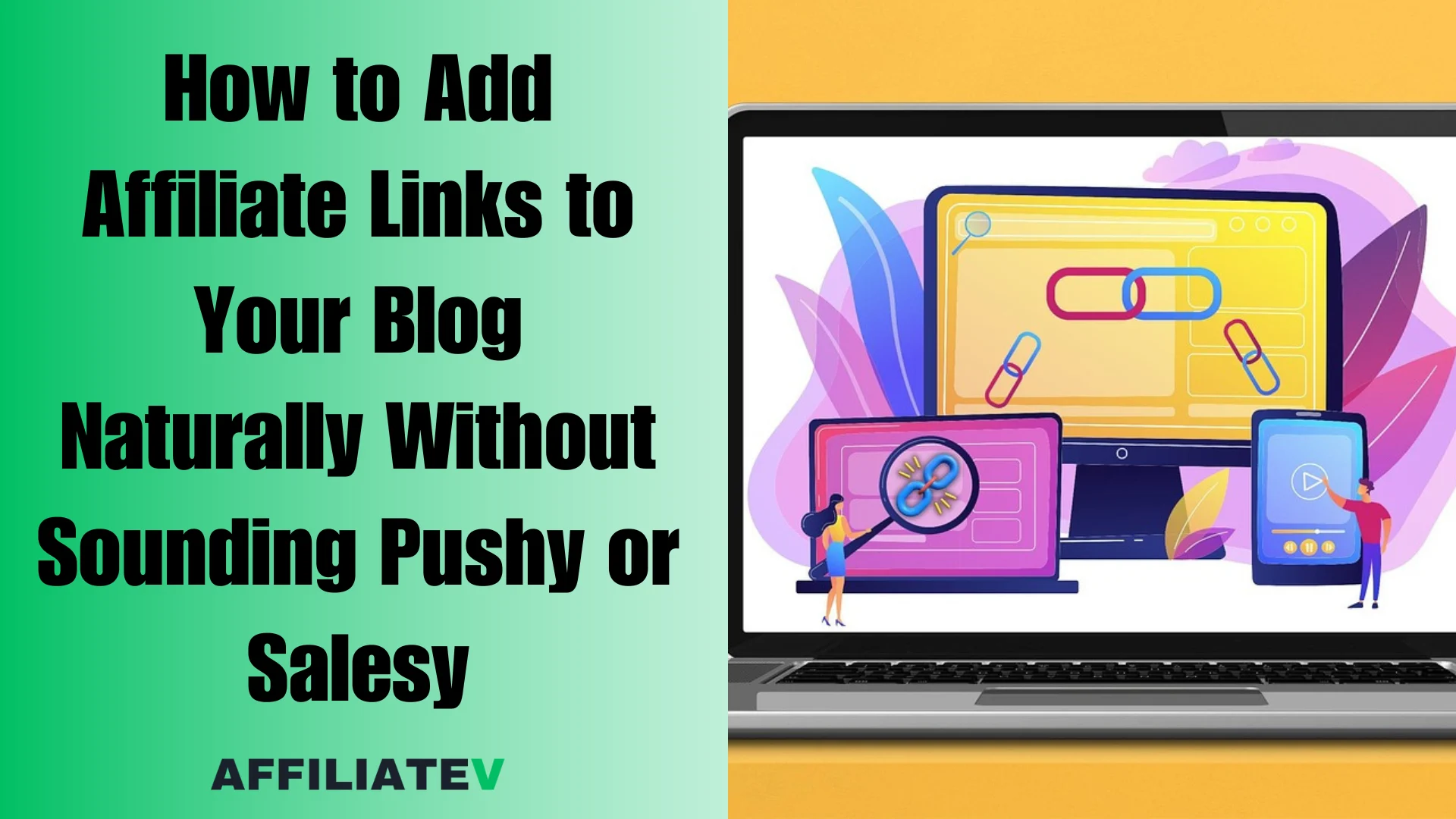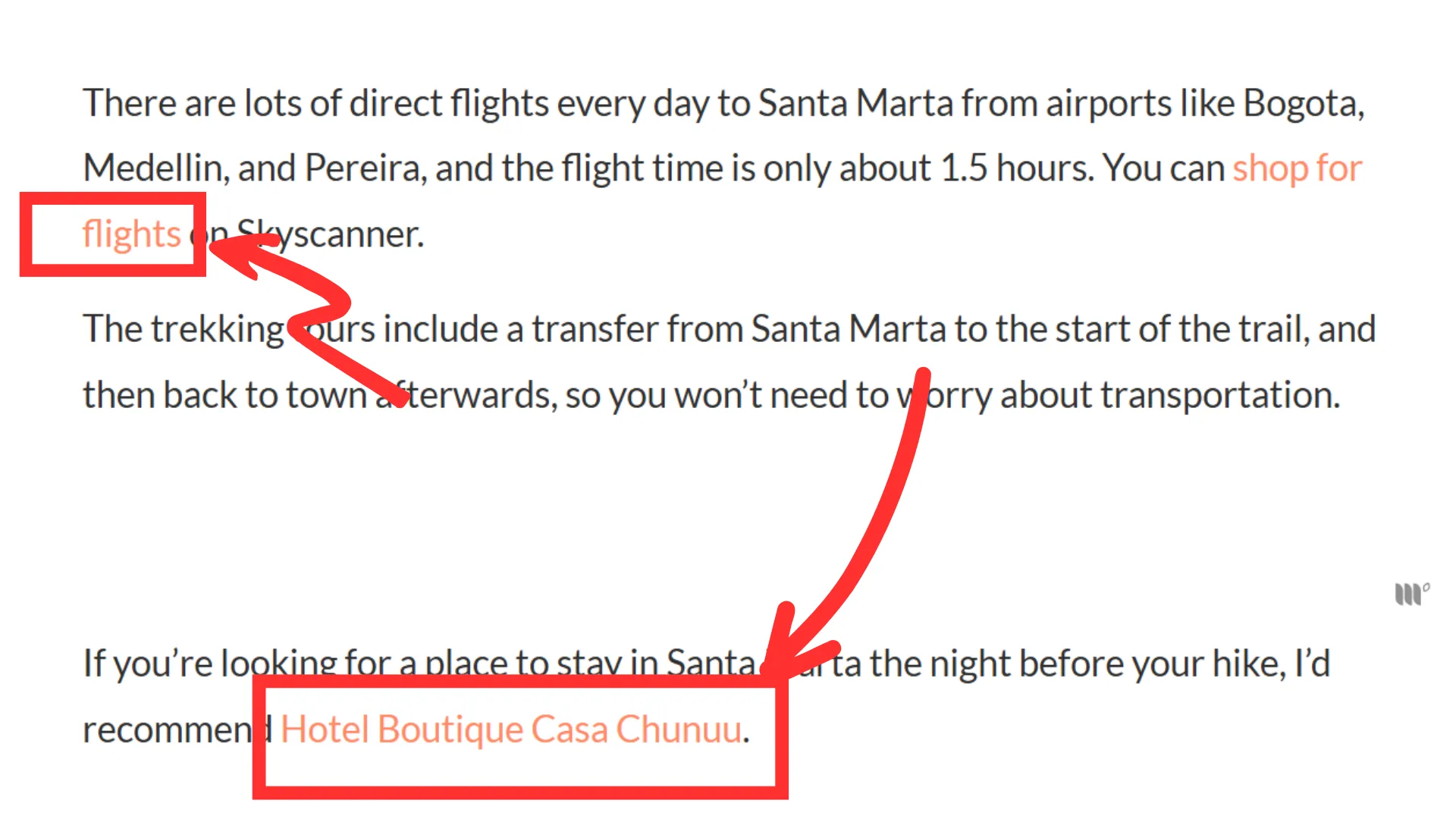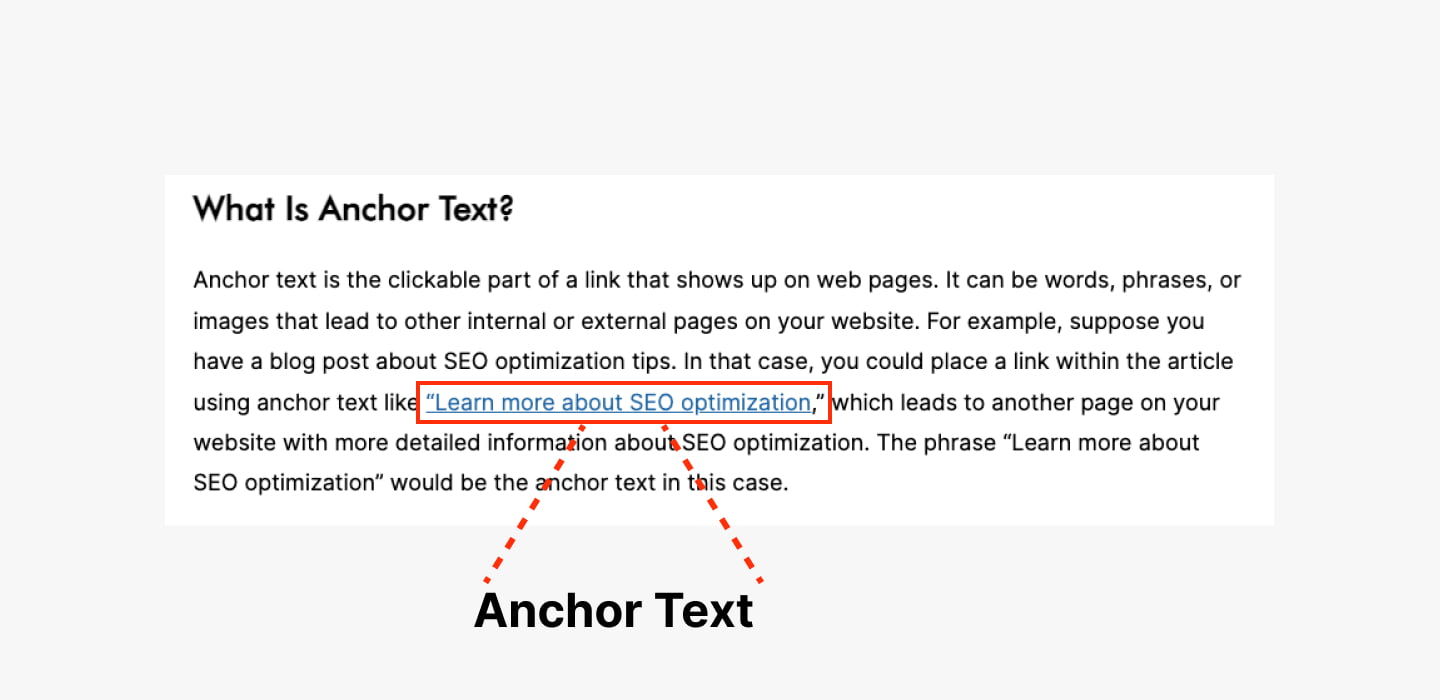How to Add Affiliate Links to Your Blog Naturally Without Sounding Pushy or Salesy

When I first got into affiliate marketing, I used to slap my affiliate links everywhere—random places, no real context, just hoping people would click. I’d drop a link in the middle of a paragraph, thinking, Oh, they’ll just buy it. They didn’t. Readers bounced terribly.
My posts felt like ads, not helpful content. I was basically screaming, Buy this! instead of showing why it was worth their time.
Affiliate links can be powerful when used right. They let bloggers earn money by recommending products they trust. When done well, they help readers and boost income, but on the other hand, when done wrong, they feel forced, spammy, and pushy.
The main challenge here is that you need to promote without sounding like a salesperson. People hate being sold to, but they love useful recommendations. The key is blending links into your content naturally, so they feel like part of the conversation.
That’s what I’ll show you. No hard sells. No forced links. Just simple, effective ways to add affiliate links to your blog naturally without driving readers away.
100 Ways to Use Affiliate Links to Make Money While You Sleep is my favorite guide for this topic. It breaks down exactly how to add affiliate links naturally to your blog. Consider checking it out if you want to make your recommendations feel effortless and genuine.
Key Takeaways
- Sloppy affiliate links drive readers away.
- Focus on helping, not selling.
- Affiliate links should feel like a natural part of the content.
- Readers trust real recommendations, not forced promotions.
- Context matters—place links where they make sense.
- Provide value first, then suggest a product.
- A hard sell kills engagement.
- The right approach boosts clicks and earnings.
Why It’s Important to Add Affiliate Links Naturally
a). Builds Trust with Your Audience
People can spot a sales pitch from a mile away. If they feel like you’re just trying to make money off them, they’ll leave fast, but if they trust you, they’ll listen.
The key is honesty. Recommend products you actually believe in. Give real reasons why they help. If a reader trusts your advice, they’re more likely to click—and buy.
I learned this years back. At first, I’d toss links into every post, hoping someone would bite. No context, no real recommendation—just Here, buy this! Nobody did.
The moment I switched to sharing honest experiences, everything changed. People engaged more, asked questions, and actually clicked the links.
b). Enhances User Experience Instead of Disrupting It
Nothing kills a good article like an out-of-place affiliate link. Readers come for information, not ads. If they feel interrupted, they’ll bounce. Your links should feel like a natural extension of the content, not a break from it.
For example, if you’re writing about the best coffee makers, don’t just say, This one is great! and drop a link. Explain why it’s great. Maybe it saves time, makes amazing espresso, or lasts forever. Give readers a reason to care before suggesting they check it out.
A well-placed link adds value. A random link screams I just want your money...hahahaa, Keep it smooth. Keep it relevant.
c). Increases Engagement and Conversions Without Feeling Like an Ad
People ignore ads. They skip commercials (personally, I would also skip). They install blockers. If your blog feels like an ad, they’ll scroll past your links without thinking twice. But if your content pulls them in and helps them, they’ll stay. And when they stay, they’re more likely to take action.
Think about the blogs you love. Do they shove products in your face, or do they naturally recommend things that make sense? The best ones blend affiliate links so well that you barely notice. You just trust their advice. That’s the goal.
When done right, affiliate links don’t feel like promotions. They feel like useful tips from a friend. That’s how you keep readers engaged—and turn them into buyers.
How to Add Affiliate Links to Your Blog Naturally
Now let’s get into it…
1. Focus on Providing Value First
If your first thought is How can I make money? you’re already doing it wrong. People don’t visit blogs to see ads—they come for help, advice, or entertainment. Your job is to give them that. The money comes later.
I learned this the hard way. In the beginning, I’d stuff affiliate links into posts without offering real value. It felt forced. Readers didn’t stick around, and they definitely didn’t buy anything. Once I shifted my focus to helping first, everything changed.
Solve a Problem or Answer a Question
Before adding links, ask yourself: What does my audience need? Maybe they’re looking for the best budget camera, a quick dinner recipe, or tips to sleep better. Give them real solutions. Make your post worth reading on its own—even if they never click a link.
For example, if you’re writing about hiking, don’t just drop a link to hiking boots. Explain why good boots matter. Talk about blisters, ankle support, and durability. Make the reader think, Wow, I actually need this. When you finally mention a product, it feels natural.
Example: Travel Blogger Sharing Personal Experiences
Let’s say you run a travel blog. Instead of saying, This suitcase is great, buy it here, tell a real story.
“On my last trip to Europe, I made the mistake of using a cheap suitcase. The wheels broke halfway through, and I had to drag it across cobblestone streets. Never again. Now, I swear by [this carry-on]. The wheels glide smoothly, and it fits perfectly in overhead bins.”
See the difference? It’s not a sales pitch—it’s a personal experience. The link is just part of the story. That’s how you add affiliate links without making people feel like they’re being sold to.
Master the Rule: Value First, Money Second
If you create content just to make sales, readers will see right through it. But if you genuinely help them, they’ll trust your recommendations. And when they trust you, they’ll buy—without you having to push.
Recommended reading: Why Valuable Content Wins in Affiliate Marketing (And How to Create It)
2. Use Contextual Linking Instead of Hard-Selling
Nobody likes being told what to buy. The second you say Buy this now! people tune out. That’s why dropping affiliate links randomly doesn’t work. They should feel like part of the conversation, not a sales pitch.
I used to make this mistake. I’d write a post and then shove in a link with a big, bold CLICK HERE TO BUY! It looked desperate. Readers ignored it. When I started weaving links into sentences naturally, clicks went up—without me pushing.
Link Naturally Within Sentences
The goal is to make links feel effortless, like a friend casually recommending something. Instead of saying:
Bad: This is a great coffee maker. Buy it here!
Instead Try:
Good: I’ve tested a lot of coffee makers, but [this one] is my favorite. It makes strong coffee in minutes.
The difference is, one sounds like an ad. The other sounds like helpful advice.

Example: Travel Blogger Mentioning a Backpack
Imagine you’re writing about packing for a trip. Instead of forcing a link in, make it part of the story:
“I used this [lightweight hiking backpack] on my last trip, and it made traveling so much easier. It held all my gear without hurting my shoulders.”
This way, the product feels like a natural part of your experience. No pressure. No pushing. Just a useful tip.
Avoid Too Many Call-to-Actions (CTAs)
A good post doesn’t feel like an ad. If you’re constantly telling people to Buy this! or Click here! they’ll get annoyed. Instead, let your words do the work. If you describe something well, readers will want to check it out on their own.
Just think of it like this: Would you rather hear a friend say, You NEED to buy this right now! or I tried this, and it really helped me? The second one feels natural. That’s how you should write your links.
Affiliate marketing works best when it doesn’t feel like marketing at all. Keep it smooth, keep it real, and people will trust your recommendations.
3. Create In-Depth Reviews and Comparisons
A good review doesn’t just tell people what to buy—it helps them decide for themselves. That means being honest, not just hyping up a product because it pays well. Readers can smell a fake endorsement from a mile away. If they don’t trust your review, they won’t click your links.
Give Real Pros and Cons
No product is perfect. Instead of acting like everything is five stars, highlight both the strengths and the flaws. This makes your content more useful and builds trust.
For Example:
“This camera takes crisp photos even in low light. But if you shoot a lot of video, the autofocus can be slow.”
That kind of honesty keeps people coming back. When they see you’re not just selling to them, they take your recommendations seriously.
Compare, Don’t Just Recommend
Instead of just pushing one product, lay out multiple options. Different people have different needs, and your review should reflect that.
Example: Best Laptops for Bloggers: A Detailed Comparison
- MacBook Air – Ultra-light and reliable, but expensive.
- Dell XPS 13 – Powerful and budget-friendly, but battery life could be better.
- Lenovo ThinkPad X1 – Durable and great for typing, but a bit bulky.
This lets readers weigh their options and pick what works for them—without feeling pressured.
Why This Works
When people trust your reviews, they follow your advice. When they follow your advice, they buy through your links. That’s how you turn affiliate marketing into long-term income—not by selling, but by helping.
4. Use Affiliate Links in Tutorials and How-To Guides
People love step-by-step guides. They search for solutions, follow instructions, and often need specific tools to get the job done. That’s where affiliate links fit naturally—when they serve a real purpose.
Link to Products as You Use Them
The best way to add affiliate links is within the tutorial itself. If you’re explaining how to do something, mention the exact tools or products that make it easier.
Example: A baking guide showing how to make the perfect sourdough bread. Instead of just saying “You’ll need a baking scale,” link to the one you actually use:
“For accuracy, I always use [this kitchen scale]. It helps measure ingredients down to the gram.”
This feels organic. You’re not telling people to buy something—you’re just showing what works.
Make Your Links Part of the Process
Affiliate links work best when they don’t interrupt the learning experience. Place them where they make sense.
- Before starting – List essential tools at the beginning.
- During the steps – Mention products when they’re being used.
- At the end – Suggest additional tools or upgrades for better results.
For example, in a home gym setup guide, you might say:
“If you’re serious about home workouts, a sturdy [adjustable dumbbell set] is worth investing in.”
No pressure. No hard sell. Just a helpful recommendation.
People trust recommendations when they see them in action. When they’re already following your guide, clicking the link feels natural. They want the best results, and if your tutorial helps them, they’ll gladly buy the tools you suggest.
5. Leverage Storytelling to Make Links Feel Organic
Selling is easy. Earning trust is hard. Readers don’t want another sales pitch—they want something real. That’s why storytelling works.
A story turns a product mention into a natural recommendation. It’s the difference between “Buy this!” and “Here’s what worked for me.” When you share an experience, people relate to it. They see their own struggles in your words. They trust your advice because it’s rooted in something real, not just a push for commissions.
Look at any great marketer. They don’t just list features; they paint a picture. They make readers feel the frustration of a bad tool and the relief of finding the right one. The best affiliate marketers do the same.
If you’re not using storytelling, you’re leaving money on the table.
6. Optimize Anchor Text and Placement
A good affiliate link should blend into the content. It should feel like a natural part of the sentence, not an interruption. That starts with strong anchor text.

Weak anchor text looks like this: “Click here to buy this amazing blender!” That’s vague, unhelpful, and screams, “I want a commission.” Instead, be specific. Something like “This high-speed blender handles frozen fruit with ease” tells readers what to expect before they click.
Placement matters too. The first few paragraphs are prime real estate. Readers scanning for quick answers might never reach the bottom. Lists and comparison tables also work well—people love options side by side. Images with clickable links? Even better.
It’s simple: clear anchor text + smart placement = more clicks.
7. Use Call-to-Actions (CTAs) Subtly
A call-to-action (CTA) should feel like a suggestion, not an order. Readers don’t want to feel pushed into a decision. When you subtly guide them toward a product or service, they’re more likely to trust your recommendation.
Think about how people share advice in real life. If a friend asked for laptop recommendations, you wouldn’t say, “Go buy this right now!” You’d probably say, “I’ve been using this one, and it’s great for video editing.” That kind of casual recommendation feels natural.
Hard-sell CTAs often create resistance. Phrases like “Act fast before it’s too late!” or “You NEED this product!” sound aggressive. Readers don’t want to feel like they’re being corralled into a sale. Instead, use a relaxed approach: “If you need a budget-friendly laptop, this one has great battery life.” That lets the reader decide without pressure.
The placement of CTAs matters too. Don’t throw them in just because you need a link. The best spots are at the end of helpful sections, inside tutorials, or within a review summary. The key is to make it fit naturally within the content, so it doesn’t feel out of place.
A good CTA blends into the writing. It doesn’t scream, “Buy this!” Instead, it smoothly connects a problem to a solution. If a product genuinely helps, trust that your audience will recognize its value.
8. Diversify Your Affiliate Link Placement
Affiliate links work best when they’re spread out naturally across your blog. If you only place them in one spot—like inside blog posts—you’re missing out on potential clicks. People navigate websites differently, so giving them multiple chances to find and engage with your links increases conversions.
Inside Blog Posts
This is the most common and effective place for affiliate links. But they need to fit seamlessly into the content. Instead of forcing a link into every paragraph, focus on spots where the product genuinely adds value.
A good approach is to mention a product while solving a problem. For example, in a post about improving work-from-home setups, you might say:
“A good office chair makes all the difference. The one I use has great back support and adjustable armrests.”
This flows naturally while giving readers a helpful recommendation.
Resource Pages
A dedicated resource page acts as a hub for all your recommended products and services. This works well for evergreen content.
A page titled “My Favorite Blogging Tools” or “Best Kitchen Gadgets I Use Daily” gives readers a curated list of products you trust. Instead of searching through individual posts, they can see all your recommendations in one place.
Sidebars and Footers
Some visitors skim blog posts but still notice sidebar and footer sections. Adding affiliate links in these areas can grab attention without being intrusive.
A simple “Recommended Tools” section in the sidebar or a “Gear I Use” link in the footer gives readers an easy way to explore your recommendations. Just don’t overload these sections—too many links can look spammy.
Email Newsletters
Your email list is a great place to share affiliate links. If you write a weekly newsletter, you can mention products naturally in your content. Instead of just dumping links, weave them into helpful insights.
A simple mention like “I tested this new time-tracking app, and it’s made a huge difference in my productivity” can get clicks without sounding salesy.
The key to success is balance. If links feel forced, readers will ignore them. But if they’re placed where they make sense, they become a natural part of the experience.
9. Be Transparent with Affiliate Disclosures
Honesty builds trust. Readers appreciate it when you’re upfront about affiliate links. If they feel misled, they won’t come back. A clear disclosure lets them know you may earn a commission while keeping your content genuine.

Where to Put Your Disclosure
Place it before any affiliate links, preferably at the start of a post. Readers shouldn’t have to search for it. A simple line like:
“This post contains affiliate links, meaning I may earn a commission at no extra cost to you.”
gets the message across without disrupting the flow.
Other good spots:
- Sidebars or footers – A general disclaimer covering your whole site.
- Inside content – If a post heavily promotes a product, remind readers midway through.
- Next to links or buttons – A simple “(affiliate link)” tag makes it clear.
Keep It Natural
Your disclosure doesn’t need to sound stiff. Instead of legal-sounding jargon, make it conversational:
“I only recommend products I personally use and trust. If you buy through my link, I earn a small commission at no extra cost to you.”
This keeps things honest while maintaining a friendly tone.
Why Transparency Works
When readers know you’re earning from links, they’re more likely to trust your recommendations—if they feel real. If your content is helpful, many will even choose to use your link to support you. Being upfront strengthens your credibility and keeps your audience coming back.
10. Track Performance and Optimize
You can’t improve what you don’t measure. Tracking your affiliate links shows you what’s working and what’s wasting space. If a link isn’t converting, change it. Small tweaks can make a big difference in your commissions.

What to Track
Not all affiliate links perform the same. Focus on:
- Clicks – Which links attract the most attention?
- Conversions – How many clicks turn into actual sales?
- Revenue – Which products bring in the most earnings?
A link might get a ton of clicks but zero sales. That’s a red flag. Maybe the product isn’t a good fit for your audience, or the landing page isn’t convincing.
How to Track Affiliate Links
Most affiliate programs offer basic analytics, but you can dig deeper:
- Google Analytics – Track outbound clicks and see which pages drive the most affiliate traffic.
- Pretty Links / ThirstyAffiliates – Cloak links and monitor performance without relying on the affiliate platform.
- A/B Testing – Compare different link placements, anchor texts, and wording to see what converts best.
Optimizing for More Commissions
A well-placed link makes all the difference. Try:
- Placing links earlier in posts – Many readers won’t scroll to the end.
- Testing anchor text – “Click here” is weak. “Check out [Product Name] for better results” is stronger.
- Using buttons or images – Some readers respond better to visuals than text links.
- Adding context – A link without explanation feels random. Explain why you recommend the product.
Keep Testing and Adjusting
Affiliate marketing isn’t set-it-and-forget-it. Check your numbers regularly. If a link isn’t converting, swap it out. If one placement drives sales, use it more.
Tracking isn’t busywork—it’s how you turn clicks into commissions.
You can also get more helpful insights from the video below:
Conclusion
Affiliate links should blend seamlessly into your content, not feel like interruptions. Readers engage when links add value, not when they feel forced.
If your recommendations come from real experience, people will trust them. That trust leads to more clicks, better conversions, and long-term income. Focus on helping first, and sales will follow.
Test different placements, track what works, and refine your approach. Small tweaks can make a big difference. The more useful your content, the more naturally your links will perform.
What’s one strategy that’s worked best for you? Let’s discuss.
Frequently Asked Questions
How do I add affiliate links without making my content look spammy?
Avoid stuffing links everywhere. Place them where they make sense—inside helpful recommendations, product comparisons, or personal stories. Links should feel like a natural part of the conversation, not an obvious sales push.
How many affiliate links should I add to a blog post?
There’s no magic number. Quality matters more than quantity. Too many links can overwhelm readers, but too few can leave money on the table. A good rule: only link when it genuinely helps the reader.
Where’s the best place to put affiliate links for higher conversions?
Early in the post (for skimmers), inside lists (for easy scanning), and within images (for visual engagement). CTAs work best when woven into recommendations instead of sounding pushy.
What type of anchor text works best for affiliate links?
Descriptive, natural text beats generic phrases like “click here.” Example: Instead of “Buy it here,” say, “This budget-friendly standing desk reduced my back pain.” Readers should know what they’re clicking.
Do I really need an affiliate disclosure, and where should I put it?
Yes, it’s a must. Transparency builds trust and keeps you legally compliant. Place a clear disclosure at the beginning of your post so readers see it right away.






